Lawngrass Comparisons
I teased this story by saying that we’re just a few weeks away from the only time of the year when we can successfully plant all of the turfgrass options we have here in Texas. So I’m going to use this as the time to compare them all to help you make your selection.
Warm-season grasses…
These make up the bulk of our Texas lawns. They’re grasses that do most of their growing during the warm months from mid-April through September. Each of these goes dormant in winter. Plant these April through mid-September, preferably May-August.
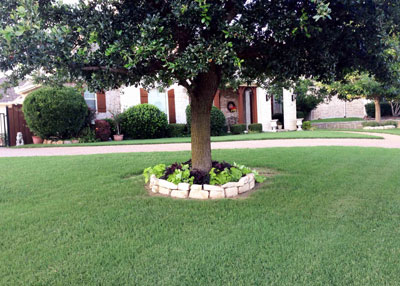
• Common bermudagrass. If you live in the northern half of the state, this is what you’ll see in the majority of lawns in your town.
Advantages:
Drought-tolerant;
Low maintenance;
Inexpensive to plant (seed, sod or plugs);
Tolerant of pedestrian traffic;
Comparatively few major pests.
Disadvantages:
Lacks crisp green color from mid-summer on;
Invasive into flowerbeds, groundcover plantings;
Intolerant of shade (requires 7-8 hours of sunlight or more);
Harbors mold spores, so more likely to stir allergies than most other grasses.
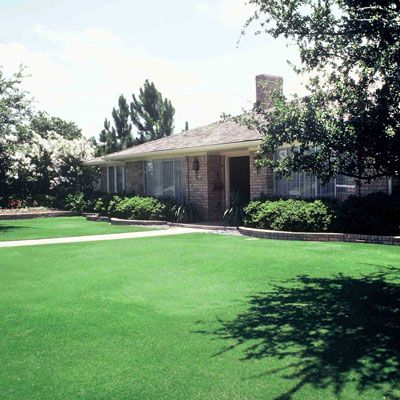
• Dwarf hybrid bermudagrass varieties. There are many of these. They got their start in the sports industry for golf greens and fairways, also for athletic fields.
Advantages:
Ultimate in picture-perfect lawns;
Same advantages as common bermuda.
Disadvantages:
Same disadvantages as common bermuda;
Highest maintenance of any lawngrass;
Expensive to plant (sod or plugs).

• St. Augustine. Folks in South Texas have used this as their go-to lawn grass for many decades. It’s also fairly common in more northern parts of the state.
Advantages:
Tolerant of shade – grows best in sun, but survives in as little as 5-6 hours of direct sunlight, 3-4 hours in South Texas;
Crisp green color all season;
Least likely to cause allergies when mowing;
Our most assertive lawngrass – crowds out other types of turf.
Disadvantages:
Intolerant of drought;
Intolerant of pedestrian traffic;
Serious pest problems with chinch bugs, take all root rot, gray leaf spot and brown patch;
Can suffer freeze damage in I-20/I-30 corridor and northward.
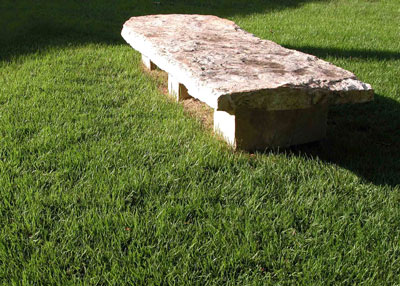
• Zoysia. There are many varieties and more are being introduced. Interest in zoysias is growing.
Advantages:
Slower growing so somewhat easier to maintain;
Intermediate to St. Augustine and bermuda in texture, shade tolerance;
Because it’s still relatively uncommon, not troubled by as many insects, diseases.
Disadvantages:
Expensive to plant (sod, plugs);
Slower to cover;
Longer dormant (brown) season in winter.
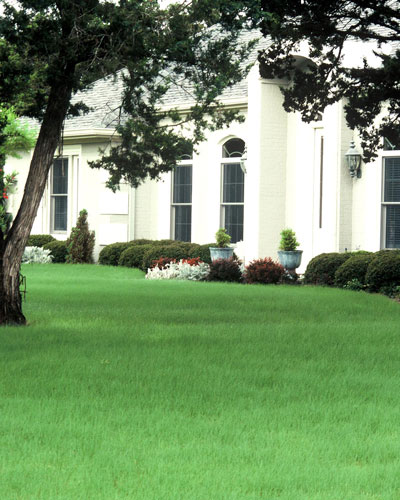
• Buffalograss. We thought this might be a fine new option when varieties Prairie and 609 were introduced in the early 1990s, but we soon found out that their one major shortcoming made it almost impossible to count on them as lawn grasses.
Advantages:
Fine textured.
Disadvantages:
Almost always invaded and overtaken by common bermudagrass, hence difficult to recommend.
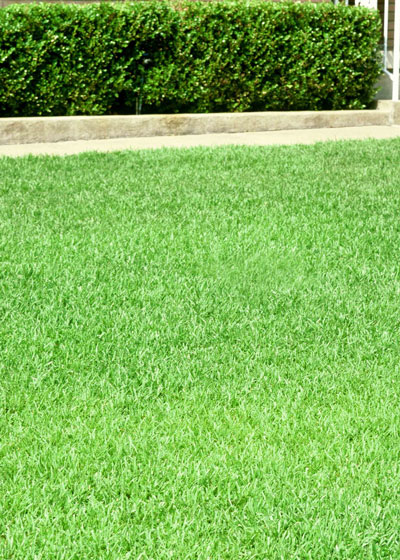
• Centipede. It resembles St. Augustine, even to the point that it’s referred to as “poor man’s St. Augustine.” But it has limitations enough that it’s only used in East Texas.
Advantages:
Low maintenance;
Inexpensive to plant.
Disadvantages:
Must have sandy, acidic soils so limited to East Texas.
Cool-season grasses…
These are the opposite of warm-season types. These grow during the cooler months of September through May. They’re green in the winter, and they struggle with the heat of the summer as I’ll explain. Sow these in September or early October.
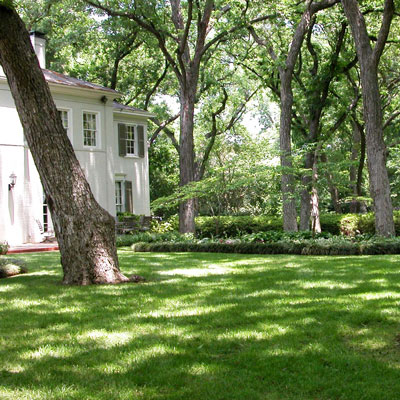
• Tall fescue. This grass came into vogue about 40 years ago and many of us tried it. But we found out that it has limitations. It’s great where it works, but it struggles elsewhere.
Advantages:
Rich green color all winter;
Tolerant of shade but requires 5-6 hours of direct sunlight daily;
Inexpensive to plant (seed).
Disadvantages:
Thins or dies out in heat, so adapted primarily to Northwest Texas;
Not to be used as an over-seeding grass since it doesn’t die out completely and requires different mowing height, and since it competes too late into growing season;
Thins in hot weather – requires overseeding each September to keep stand dense;
Requires extensive irrigation to keep alive during summer;
Intolerant of pedestrian traffic.
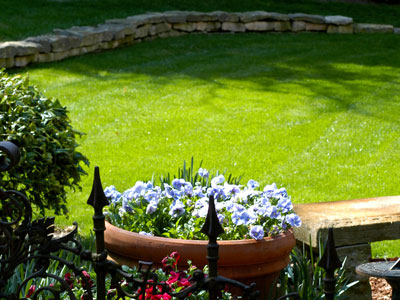
• Ryegrass. There are a couple of categories, listed in general terms as “annual” and “perennial” ryegrass. However, because of the heat of our summers, both types are annuals in Texas.
Advantages:
Good temporary cover when you’re unable to plant permanent grass;
Give green turf in winter when that’s desired – “perennial” rye costs more but is much easier to maintain.
Disadvantages:
Is only temporary – must be replanted each September;
Does require mowing in winter.
